Capital:
Ottawa
Currency
Canadian dollar
Best time to visit:
Summer offers pleasant temperatures suitable for outdoor activities. Between November and April, southern cities receive an average of 2.5 m of snow, and temperatures often drop to -25°C.
In a word:
What’s up?
Vaccines
None
Warnings:
– Black bears and grizzlies are common in Canada; follow the advice provided by Parks Canada.
Healthcare facilities are excellent but generally very expensive. Consider purchasing good travel insurance.
At the table:
Maple syrup is the symbol, both on pancakes and beavertails (hot pancakes). Thanks to its cosmopolitan nature, you'll find culinary excellence from around the world here!
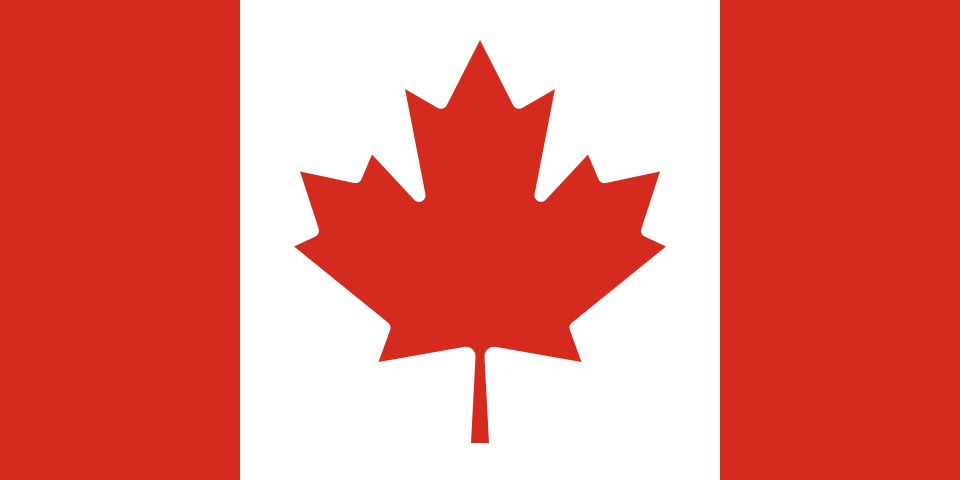
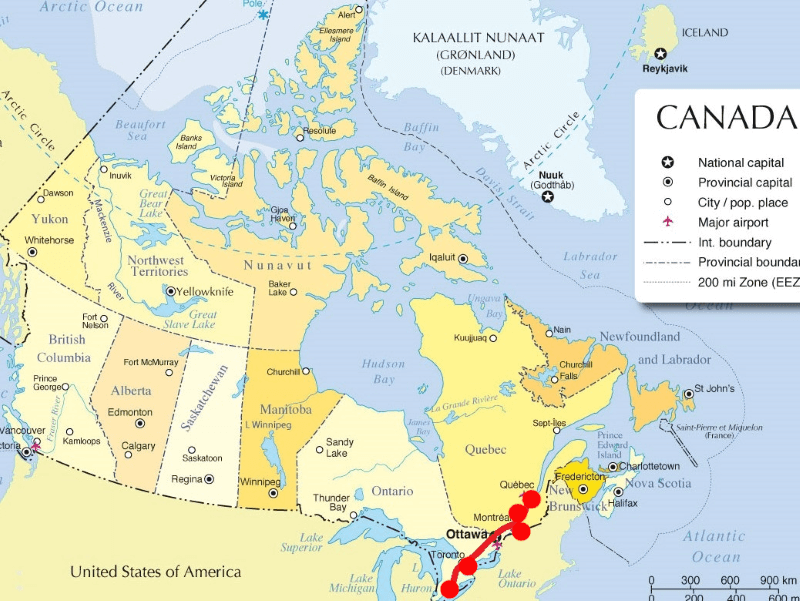
Essential experiences:
Experience Niagara Falls aboard a boat that takes you right under the water; navigate the utter silence of Lake Wapizagonke aboard a canoe; lose yourself in the timeless streets of Quebec City or downtown Ottawa; sample delicious dishes from around the world in cosmopolitan Montreal.
There's a special way to discover Eastern Canada: by hitting the road, letting the asphalt guide you as it winds through vibrant metropolises, breathtaking landscapes, and places where nature reigns supreme. This journey begins in bustling, cosmopolitan Toronto, where skyscrapers and multiculturalism blend in infectious vitality. From there, we head south to admire the unstoppable power of Niagara Falls, a truly breathtaking natural spectacle.
The road then bends northeast, following the St. Lawrence River, passing through the understated elegance of the capital, Ottawa, and the timeless atmosphere of Quebec City, with its cobblestone streets and the scent of French history. But it is in La Mauricie National Park that the journey becomes intimate: dense forests, sparkling lakes, and profound silences reconnect us with the wild essence of this immense territory. Finally, the last stop brings us back to urban life, to the creative and multicultural energy of Montreal, where French blends with the modern pace of a city that never stops reinventing itself.
A journey between two provinces, a thousand faces and infinite emotions.
Our suggested itinerary (16 days) | |
four days: | Toronto (visit to Little Italy, Chinatown, Kensington Market, City Hall, Harbour Front, CN Tower); Niagara Falls (cruise and walk under the falls) |
three days: | Ottawa (visit to Parliament, stroll along the Rideau Canal, shopping at By Ward Market) |
five days: | Quebec City (visit to the old town); St. Mathieu du Parc in La Mauricie National Park (hiking to Shewenegan or Lac Gabet; canoeing on Lake Wapizagonke) |
four days: | Montreal (visit Little Italy and Vieux Montreal, stroll along Avenues Laurier and Saint Laurent, and sample cuisines from around the world) |
Toronto is a vibrant mix of cultures and neighborhoods, with a strong and charming urban feel. Want to dine in Chinatown or Greektown? At a Jamaican restaurant or a Korean one? Five-star fusion or a simple bacon sandwich? It's a megalopolis, Canada's largest city and the one with the most diverse population: nearly half of its residents were born in another country, and 150 languages are spoken!
It's amazing when you walk along its avenues and come across shops, supermarkets, and restaurants from all over the world!
“In the streets of the various neighborhoods, the flavors, scents, colors, and sounds of almost every nation in the world coexist peacefully, true cultural microcosms that flourish within a larger framework that the locals proudly defend.”
We will spend three full days in this cosmopolitan city!
We're staying in Little Italy, and while it's not what I expected, it's not the stereotypical American experience of Italian immigrants in America. It's actually a very quiet, elegant, and peaceful neighborhood. We've booked a lovely apartment.Posh Digs” fully furnished with all comforts: with two comfortable bedrooms, an equipped kitchen and not far from Downtown on foot. What a great choice for whom wants to visit this stunning city!
Kensington Market. A bit shabby but pleasantly decadent, in Toronto's most authentically multicultural area; it's not a cramped, regulated market, but rather a bustling residential neighborhood. Here, you can eat cheaply, sampling flavors from around the world. Shopping is also worthwhile, thanks to the city's largest selection of vintage and secondhand clothing. The streets are filled with urban hippies with dreadlocks, tattooed punks, marijuana smokers, drug dealers, and musicians, but generally no disturbing characters. We recommend visiting in the evening, or even better on Sundays when traffic is prohibited.
City Hall. A prime example of modern architecture, it features two concave twin towers and a structure that resembles a flying saucer, though perhaps not much appreciated by Canadians, still sentimentally attached to the old City Hall from 1899. Today, it houses a few courtrooms and stands next to the new city hall, facing lively Nathan Phillips Square, a gathering place for skaters and office workers on their lunch break, as well as a farmers' market (Fresh Wednesday) and a venue for free music events and festivals!
For lunch, we stop at the legendary St. Lawrence Market, one of the neighborhood's main gathering places for over two centuries. This market, with its high, trussed ceilings, dates back to 1845 and hosts 50 stalls selling products such as bread, fish, meat, fruit, as well as specialties from many countries around the world!
Harbourfront. Along the shore of Lake Ontario, at the foot of Yonge Street, lies the Harbourfront area, which has undergone a major urban redevelopment. Today, it teems with people frequenting restaurants, theaters, and art galleries. Not far away stands the majestic symbol of Toronto: the CN Tower. An engineering feat from the 1970s, it resembles a giant hypodermic needle! Its function as a telecommunications tower has now taken a back seat to its lucrative role as a tourist attraction: riding the glass elevators to the top of the 553-meter-high structure is one of the experiences not to be missed here! We recommend purchasing the Toronto City Pass to have the opportunity to concentrate all your visits and above all save a little!
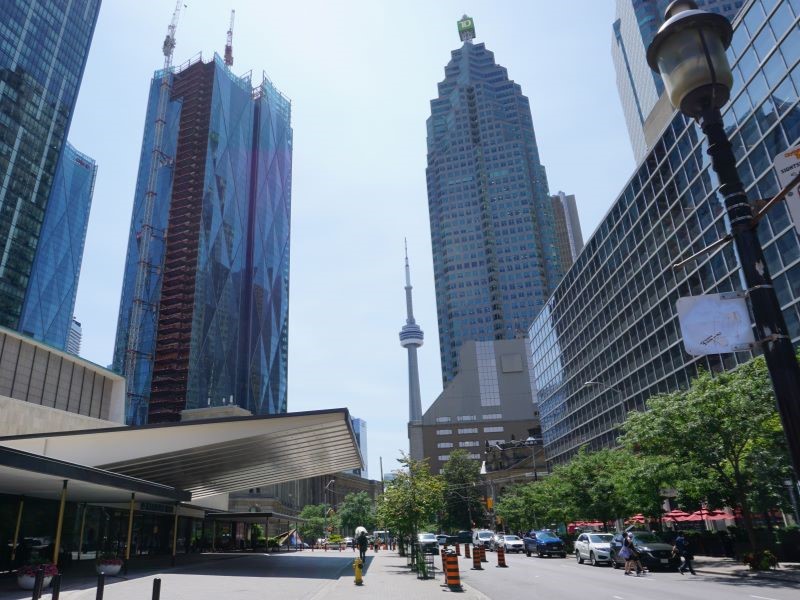
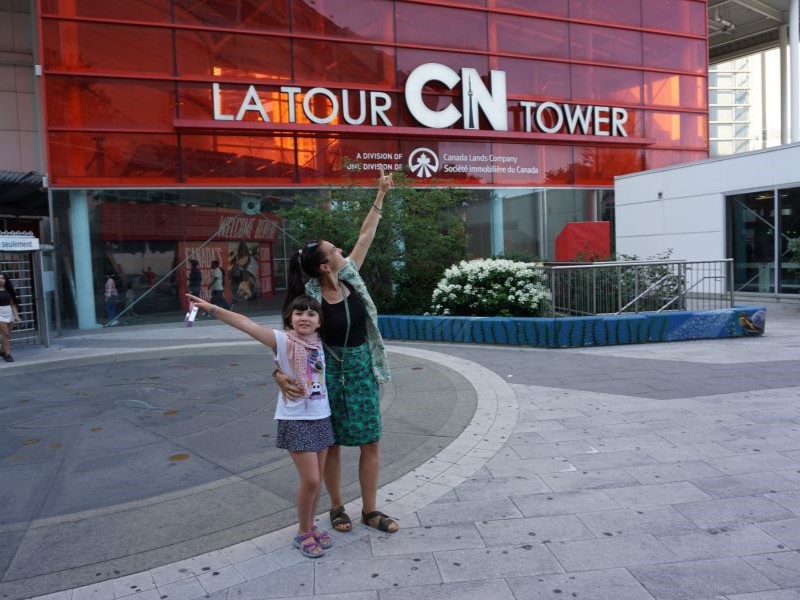
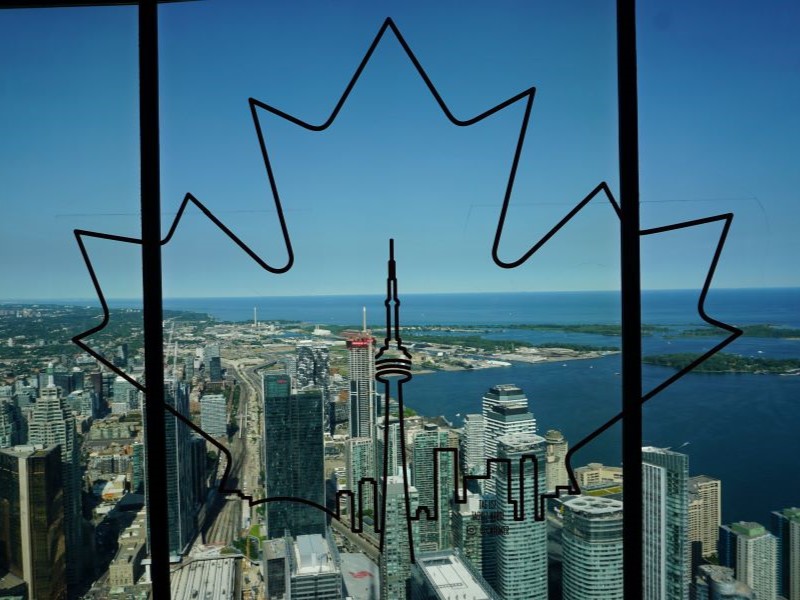
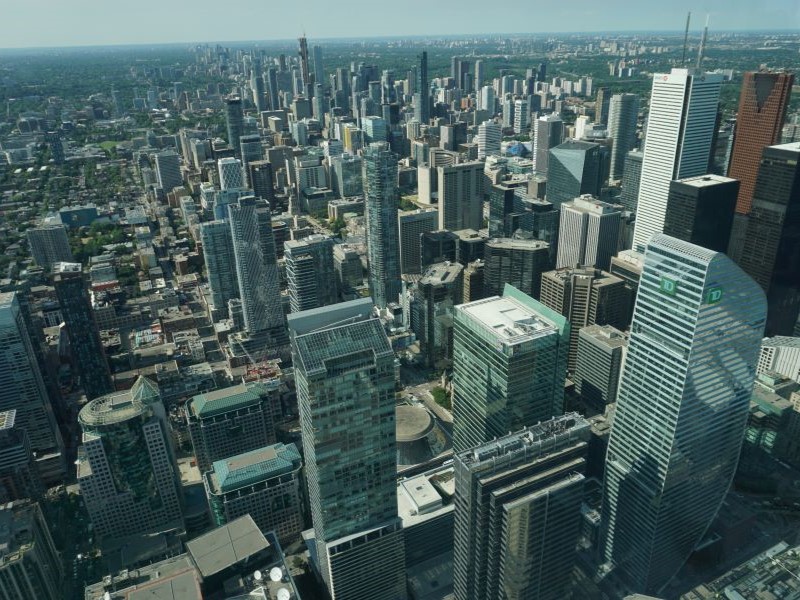
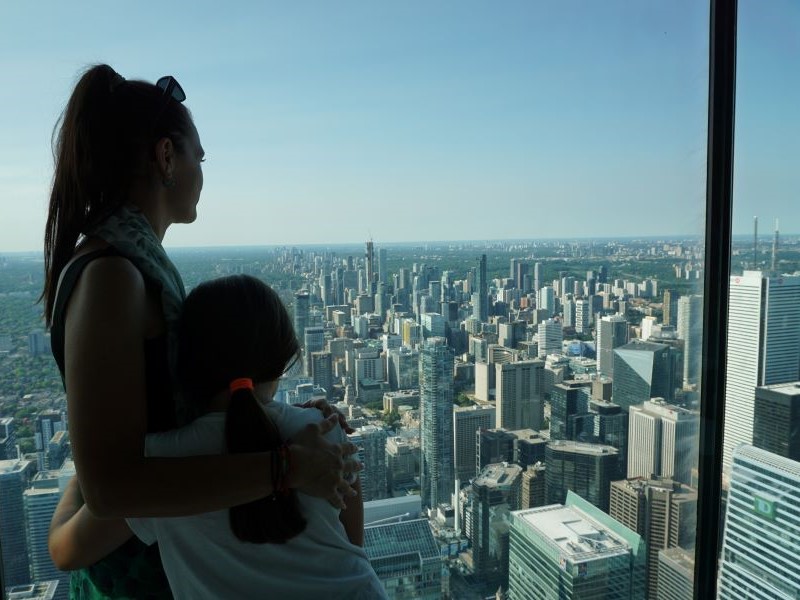
Casa Loma. Toronto's only castle! While it has never been inhabited by royalty, it's not lacking in grandeur. This 98-room residence, built between 1911 and 1914 for Sir Henry Pellat, a wealthy financier who made his fortune supplying electricity to Toronto. He later lost everything in various land deals and was forced to abandon his beautiful palace.
Royal Ontario Museum. Canada's largest natural history museum; over six million specimens are on permanent display. The sections dedicated to Chinese temple sculptures and the Gallery of Korean art are among the finest in the world. Children immediately head for the dinosaur hall, and after the Mongolia, for us, is even more captivating, and than Egyptian mummies!
I was very impressed by the room dedicated to the “natives”, in particular the totem poles carved in cedar wood from the “First Nations” tribes in British Columbia.
We return to Sakofa Square, where, once again today, there's a festival of world music and culture. A Hawaiian dancer performs her traditional dance, shortly after an Indian one, then a Caribbean group, and among us, people from all over the world are watching!
This morning we took a Megabus from Toronto's Union Square to Niagara Falls! Another great dream come true.
We will stay at Serenity Inn B&B by Diana, a Romanian lady who has lived here for 24 years and who is truly a force of nature.
This B&B is a little oasis of relaxation and tranquility, and we're already sorry we only spent one night here!
We are right in front of the United States and not far from the bridge that divides the two nations.
“The mighty Niagara Falls arches over the precipice below, roaring into the void, while a vast curtain of mist formed by the spray rises hundreds of meters into the air. Every day, thousands of visitors flock here to witness this extraordinary spectacle of nature.”
Niagara Falls is only fiftieth in the world's tallest waterfalls, at 51 meters high, but in terms of water flow it is unrivaled.
We tried to admire them from every point…
First, take a cruise (recommended), lasting 20 minutes and costing around €30. This cruise passes first the American side and then literally dives into the more spectacular Canadian ones. Despite the ponchos provided by the company, be prepared to get really wet!
Then with the “Journey behind the Falls" we passed through tunnels dug into the rock about halfway up the cliff. We recommend purchasing theAdventure Pass del Niagara Park which allows you to visit numerous attractions and try different experiences…
Finally we visit the Butterfly Conservatory, a greenhouse home to over 50 species of butterflies that live among 130 species of flowers and plants. It's truly captivating to stroll among all these colorful butterflies fluttering carefree.
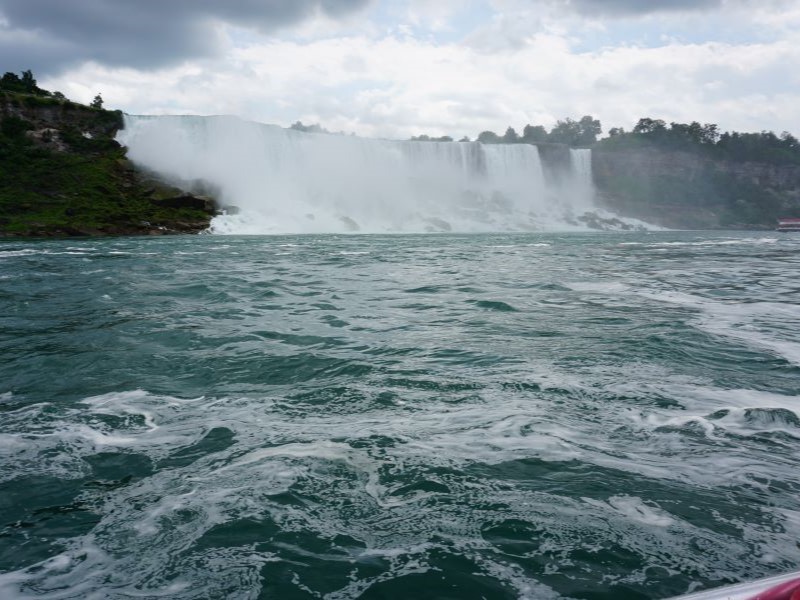
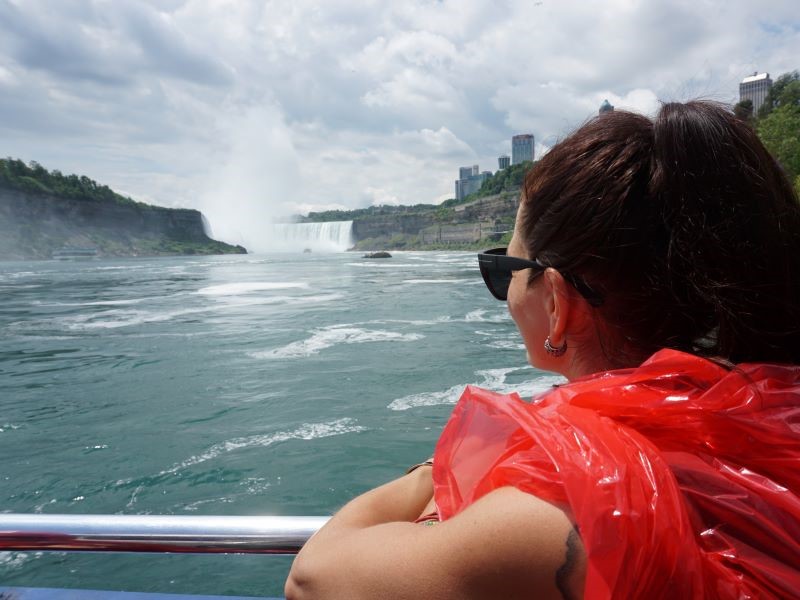
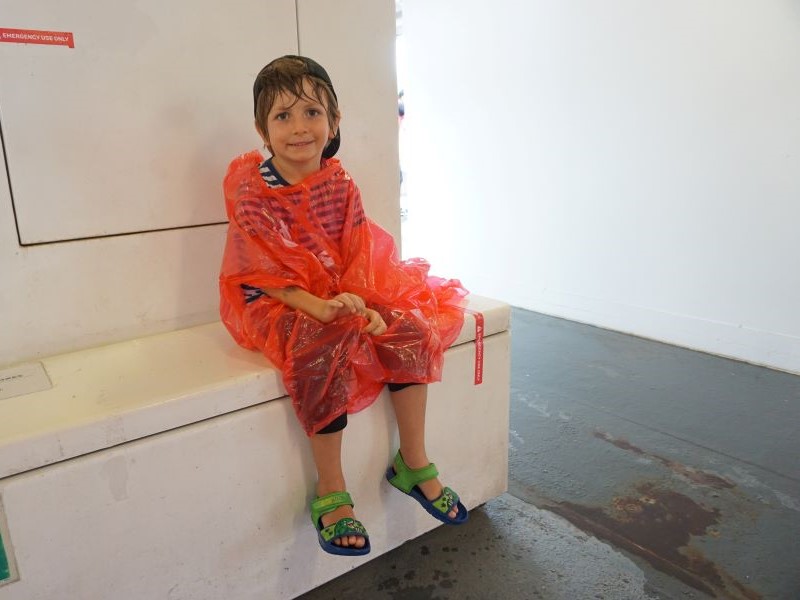
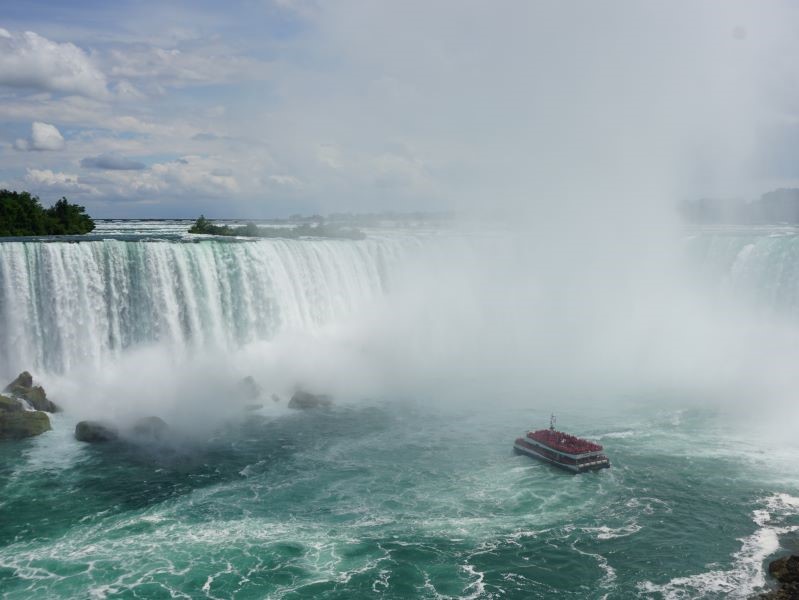
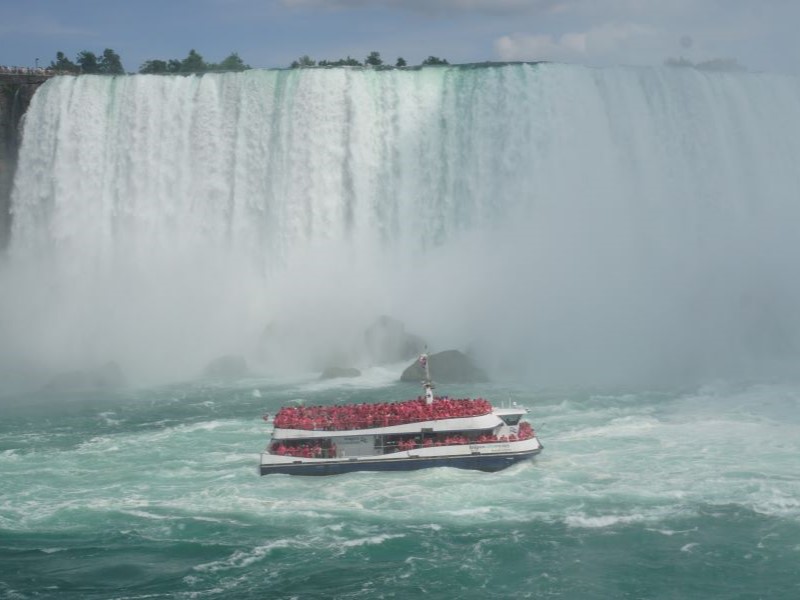
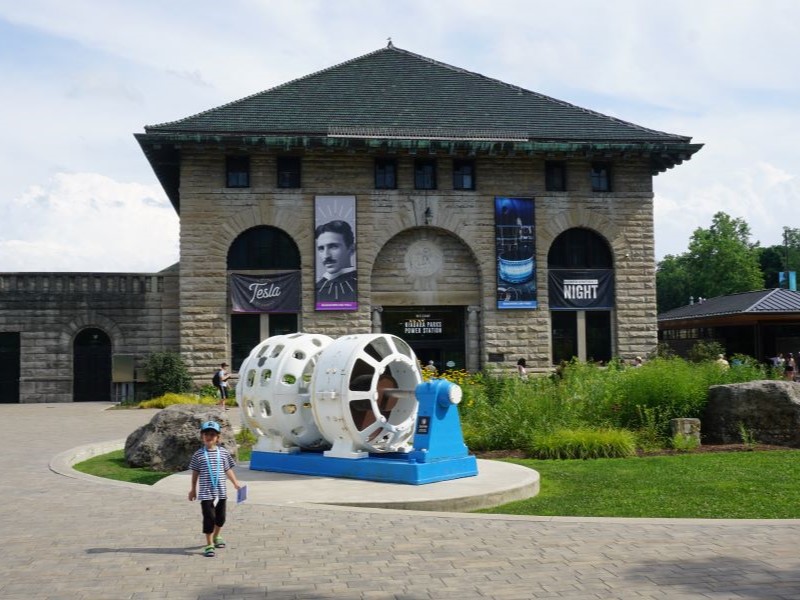
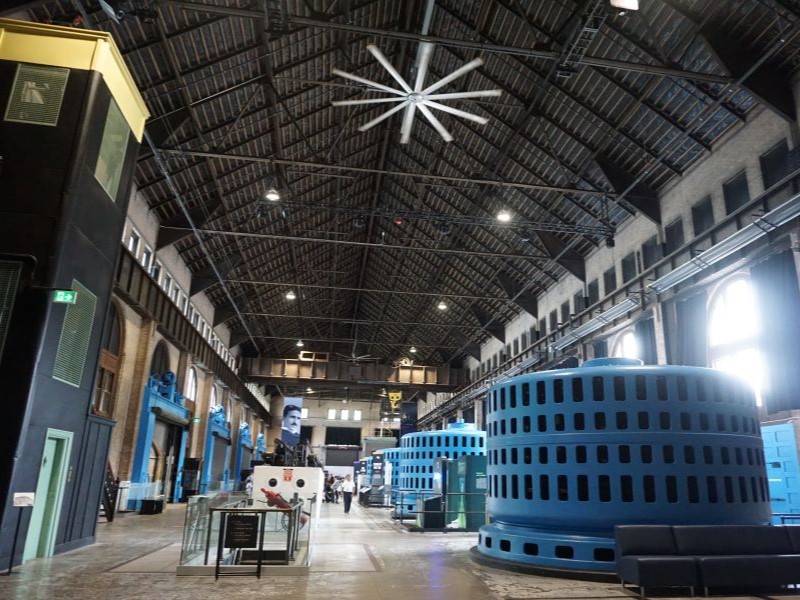
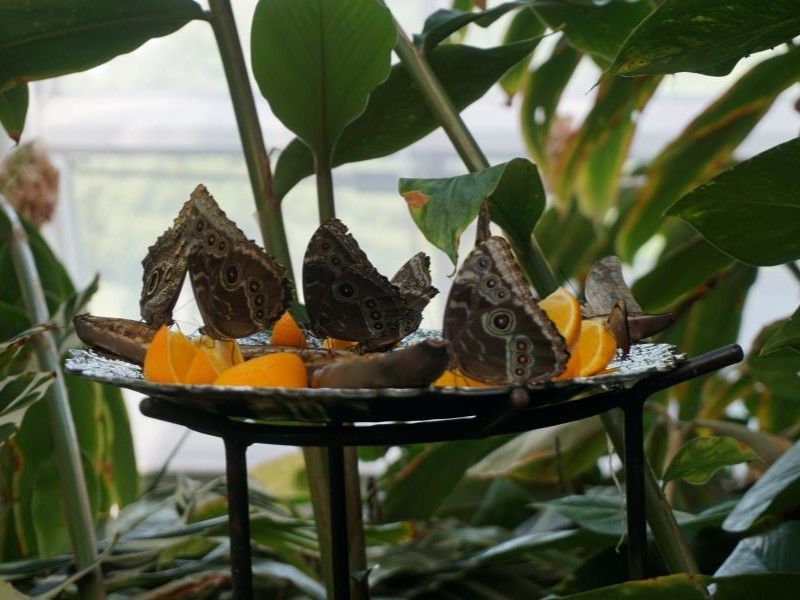
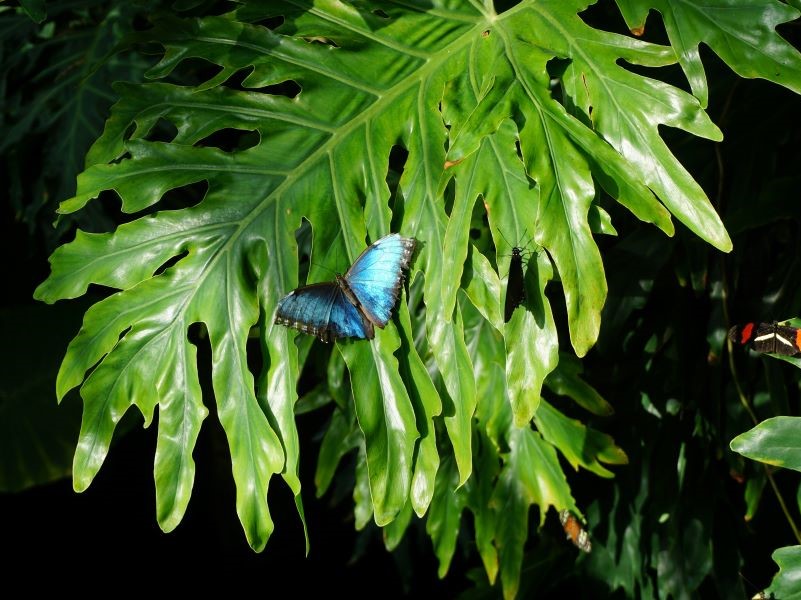
In two hours by bus we reach Toronto and then by train, very comfortable, in four and a half hours, we reach the capital Ottawa.
In Ottawa, you are immediately struck by the gigantic Parliament building, in Gothic style, even if, currently and until 2032, it is undergoing renovations so that the House of Commons and the Senate are housed in two neighboring buildings.
Ottawa is an inspiring mosaic of vibrant neighborhoods at the confluence of three rivers. It boasts some wonderful world-class museums as well as a fantastic culinary variety.
Queen Victoria chose this site as a geographical compromise between Montreal and Toronto, above all for its strategic position, halfway between the two cities, between Ontario and Quebec, between the English and the French and even more so because it was not too close to the border with the USA… You never know!
Here we will spend the next three days at the The Don Club Ottawaa lovely B&B in the city center. Elodie, from Haiti, and Shaquille, from Jamaica, opened this beautiful, incredibly welcoming, and warm B&B just last year, but you can tell they know how to take care of their guests. Delicious breakfasts prepared right in front of you!
Residents of this city, which experiences long, harsh winters, love the outdoors. The Rideau Canal, its main natural attraction, transforms into the world's largest ice skating rink in winter, nearly as large as 90 Olympic-sized hockey rinks, with nearly 5 miles of ice!
Parliament Hill. “Grand arches, copper-roofed turrets, and Gothic-style gargoyles dominate the facade of this extraordinary sandstone complex. The main building, called the Centre Block, supports the iconic Peace Tower (it resembles Big Ben); completed in 1865, the hub of Canadian political life welcomes visitors year-round.
The visit is free, all you need to do is register online and you will immediately receive your free entry ticket.
A visit to the House of Commons and the Senate is very interesting, as it allows you to see where the country's political activity actually takes place.
Not far away stands Notre Dame Cathedral, built in 1841, this gleaming metal-roofed place of worship is the oldest church in the city!
A visit to By Ward Market is a must, a vibrant and colorful neighborhood where you can do some shopping, enjoy a cold beer, and above all, eat a variety of local delicacies. We tried the famous beaver tails, a fried pastry topped with cinnamon, chocolate, and pistachios!
After admiring picturesque Ottawa from the “Kiweki Point” viewpoint in the magnificent Major’s Hill Park, we bid farewell to yet another wonderful day of travel!
We quickly stocked up on groceries at Farm Boy and headed off for a picnic at Confederation Park, making the most of the beautiful day.
Today we've traveled many miles along the Rideau Canal, a UNESCO World Heritage Site, built nearly 200 years ago to provide a more reliable means of communication between the military centers of Ottawa and Kingston, fearing another conflict with the Americans. Fortunately, the canal was never used for military purposes, but it proved invaluable for transporting goods and today it is a true nautical paradise. Along the canal are enchanting parks, lakes, and delightful towns to visit.
We end the day in The Glebe, a quaint neighborhood just south of Queensway, full of quaint antique shops and charismatic cafes!
Today we rent a car and leave Ontario for Quebec.
A 5-hour drive that passes quickly thanks to Canada's enchanting landscapes!
Quebec City is a city of firsts. It is the only city in North America with a walled historic center—a UNESCO World Heritage Site. It was home to the continent's first parish church, the first museum, the first Anglican church, the first girls' school, the first business district, the first French-speaking university, America's oldest newspaper, the Quebec Chronicle-Telegraph, and the first hospital, Hotel Dieu de Quebec. It is also home to the Chateau Frontenac, the most photographed hotel in the world, also famous because it was here in 1944 that Roosevelt and Churchill finalized the final details of D-Day: the Normandy landings.
We are staying at the Chateau Laurier, a wonderful 4-star hotel, just steps from the city's historic center. A historic and elegant hotel, equipped with all the comforts needed to make your stay unforgettable, especially the pool for the little ones!
As I jot down my thoughts sitting in the sitting room of our wonderful room, I am enchanted by the view of the majestic George V palace right in front of my window!
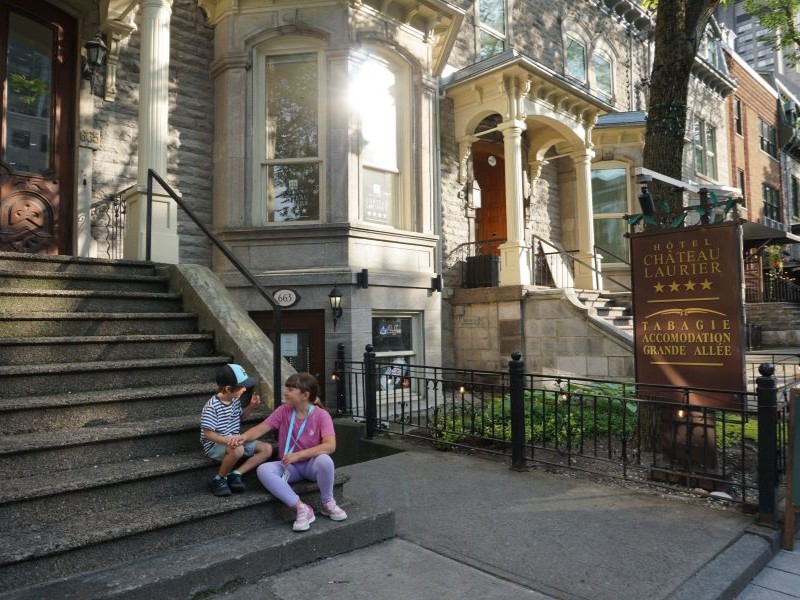
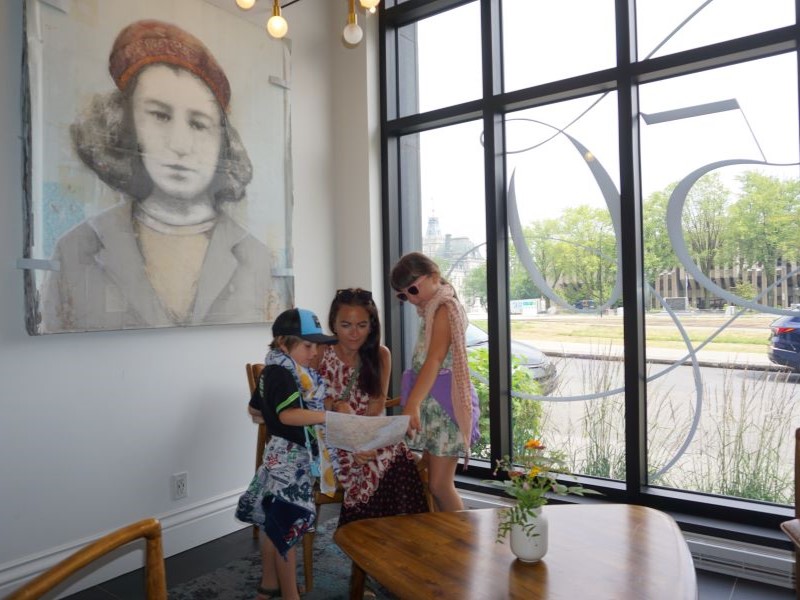

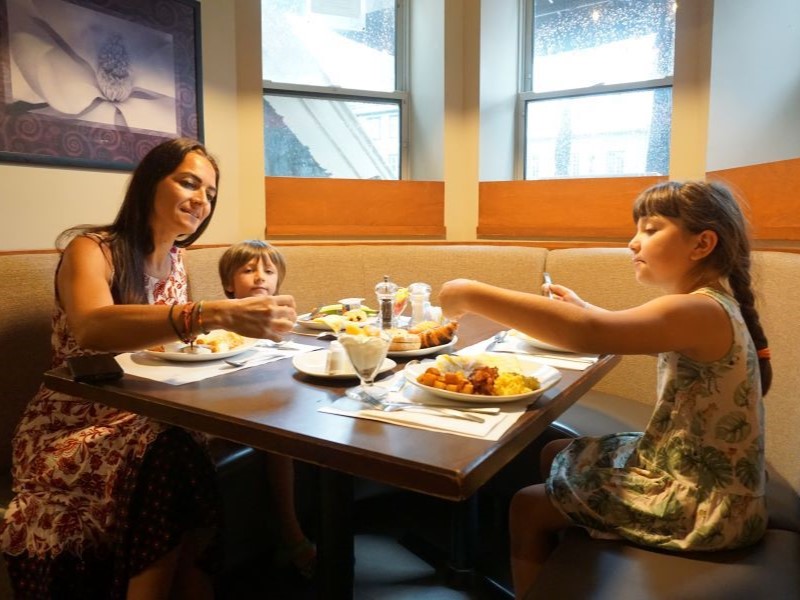
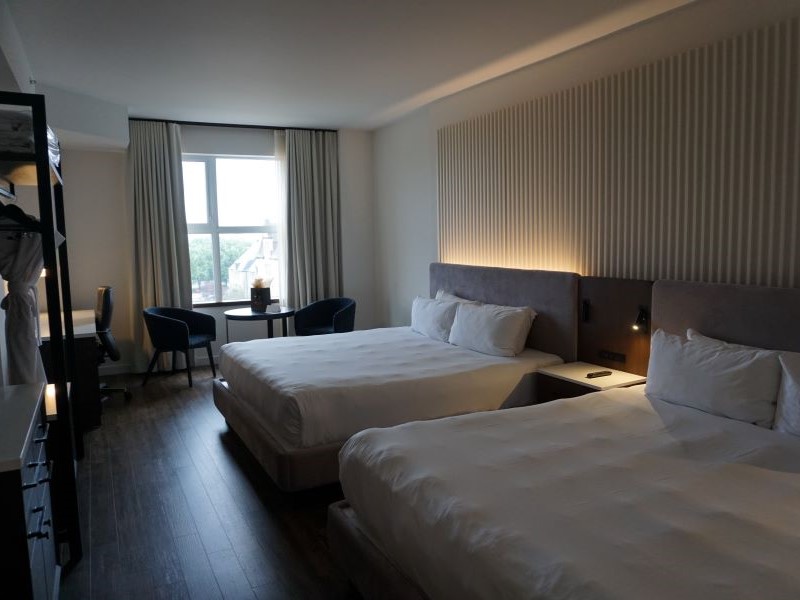
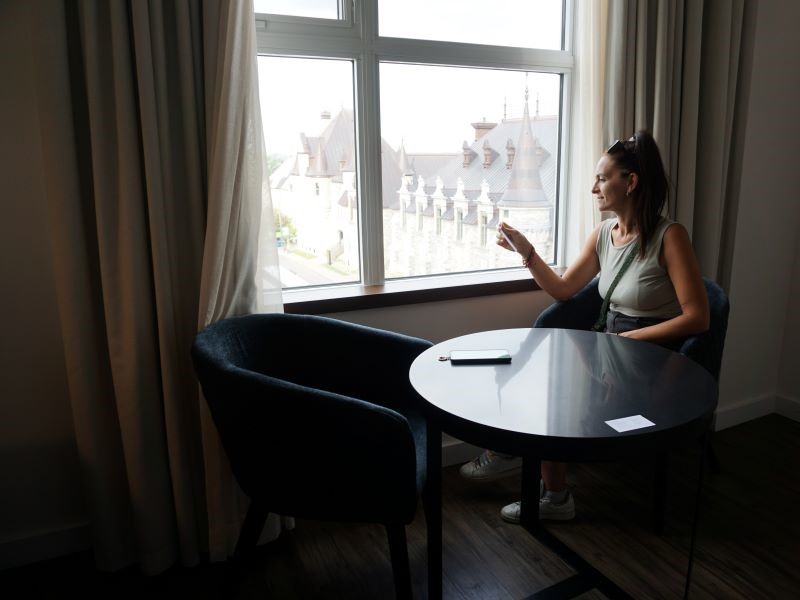
In the Old Town, you can lose yourself in its labyrinth of cozy inns and street performers near the St. Lawrence River. Opposite the Chateau Frontenac is La Terrasse Dufferin, a splendid 425-meter promenade offering stunning views.
We take the "escalier casse-cou" (literally: breakneck staircase) stairs that descend to Rue du Petit-Champlain. Along this narrow but lively street, you can have fun looking for paintings decorating the walls of some seventeenth- and eighteenth-century buildings.
Plaze Royale, the square that boasts more than 400 years of history, rich in events: from the first settlement of colonists to the defense with cannons against the English fleet in the late 1600s.
Beyond the many interesting and caliber museums, I recommend experiencing the city by wandering aimlessly through its picturesque cobblestone streets, surrounded by colorful houses often flying the blue flag with the four lilies of Quebec.
Tomorrow we set off again, leaving this elegant and aristocratic city for a couple of days of adventure in nature.
We depart early in the morning towards the Mauricie National Park.
Despite being located halfway between Montreal and Quebec City, the Maurice region is one of the least known and least visited in the province, which is why we chose it! Consider that until 1996, tree trunks were thrown into the river and were transported to the paper mills along its banks.
“Moose grazing along the shores of an idyllic lake, the cry of loons soaring over the water, bear cubs playing under the branches of birch or maple trees… These are just some of the natural attractions that await visitors to Canada’s Mauricie National Park.”
Whether admired from a canoe or on one of the many trails that wind through the park, the extraordinary natural beauty of this area is a joy for everyone, especially those who want to get away from civilization!
During our two-day visit to the park, we hiked numerous trails, admired the wonderful nature from many viewpoints, and even paddled on Lake Wapizagonke, completely immersing ourselves in the wild!
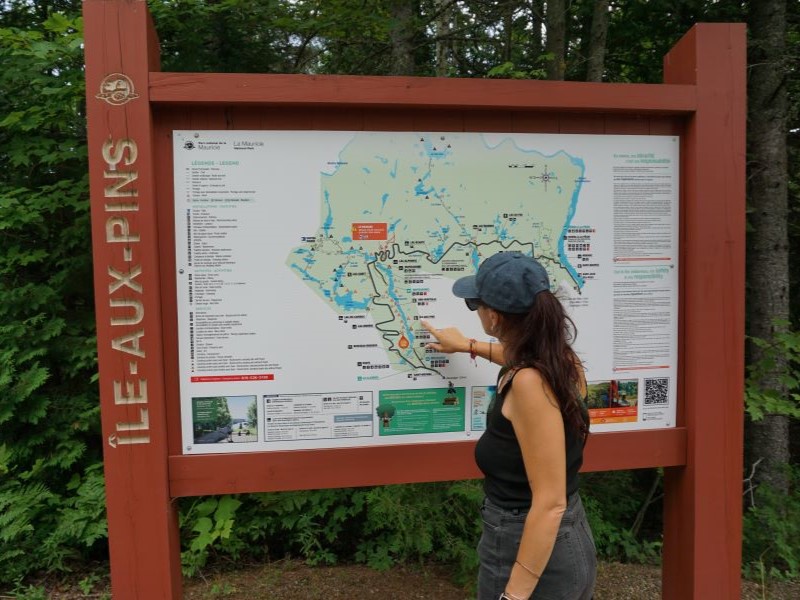
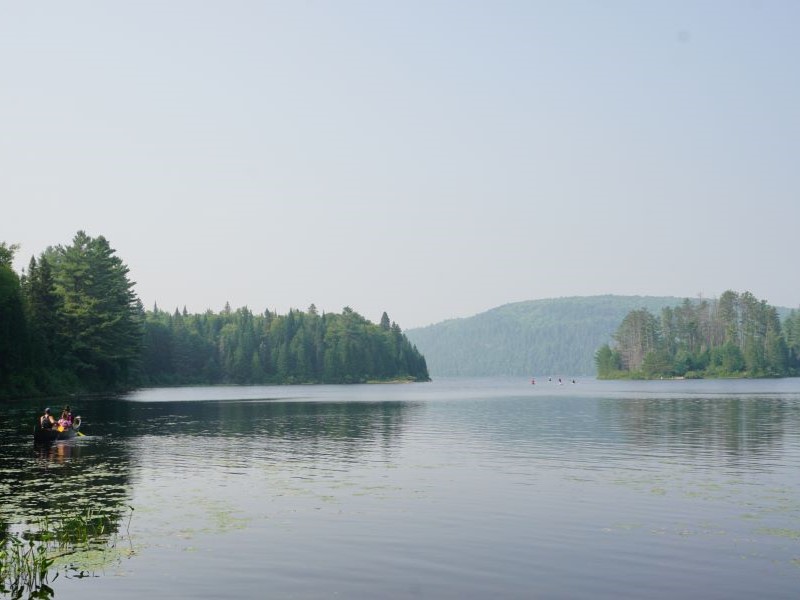
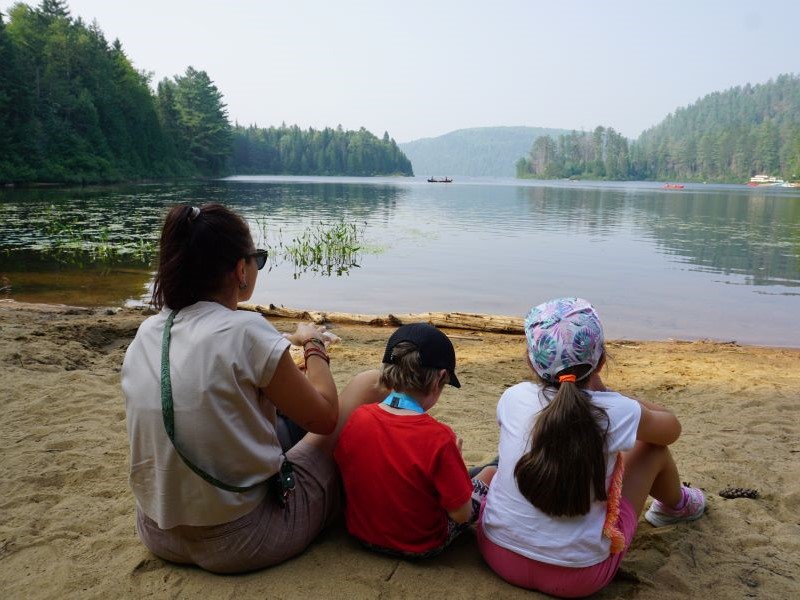
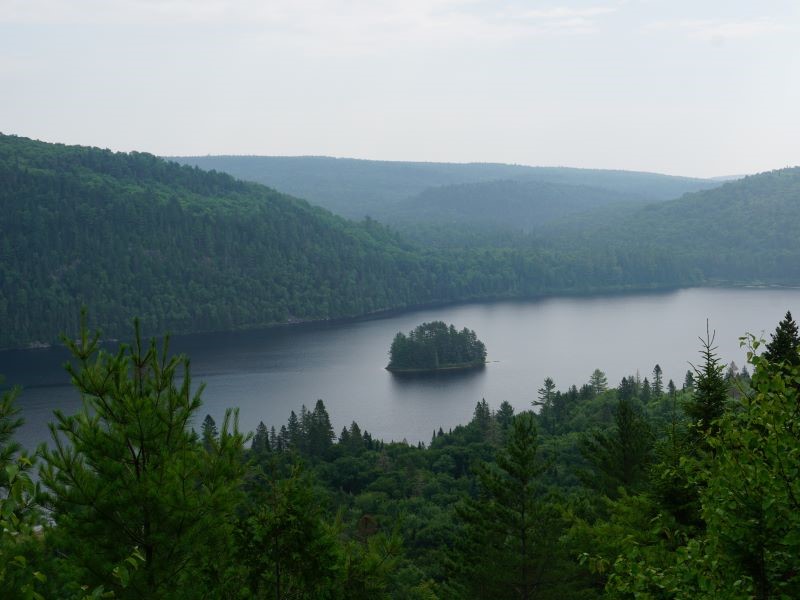
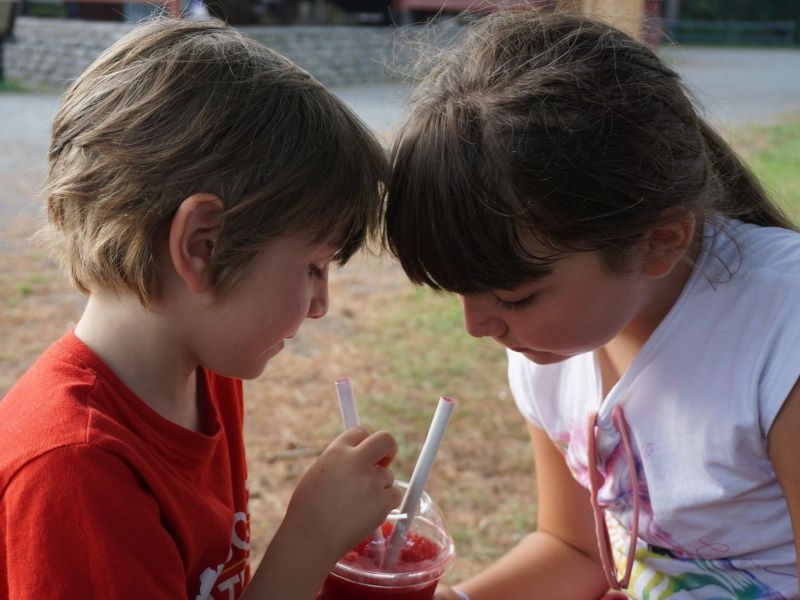
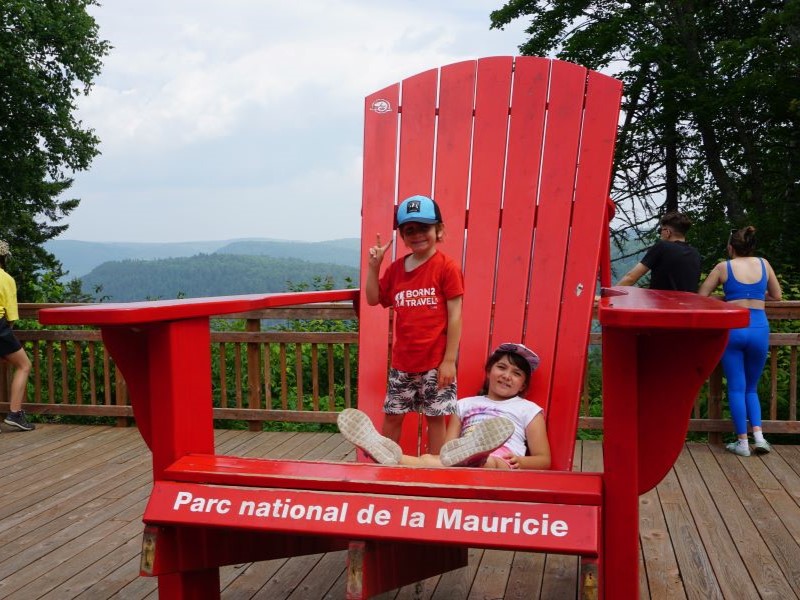
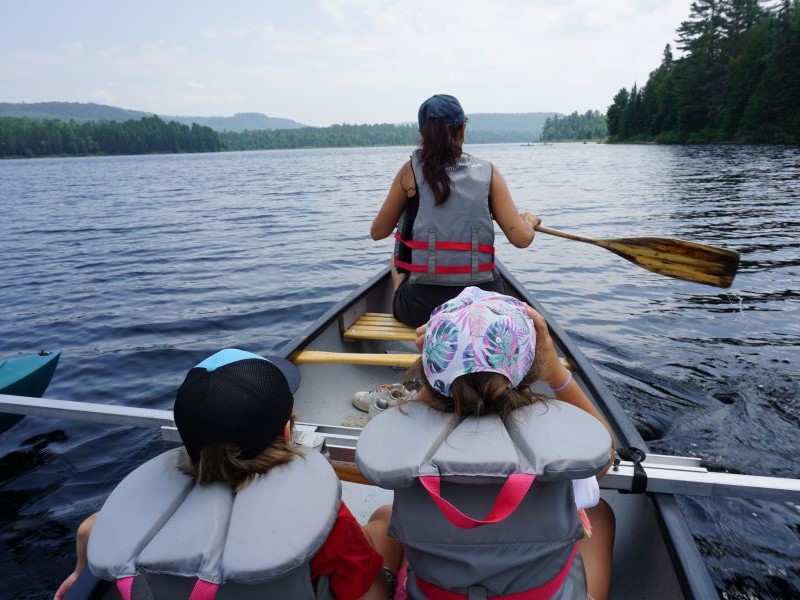
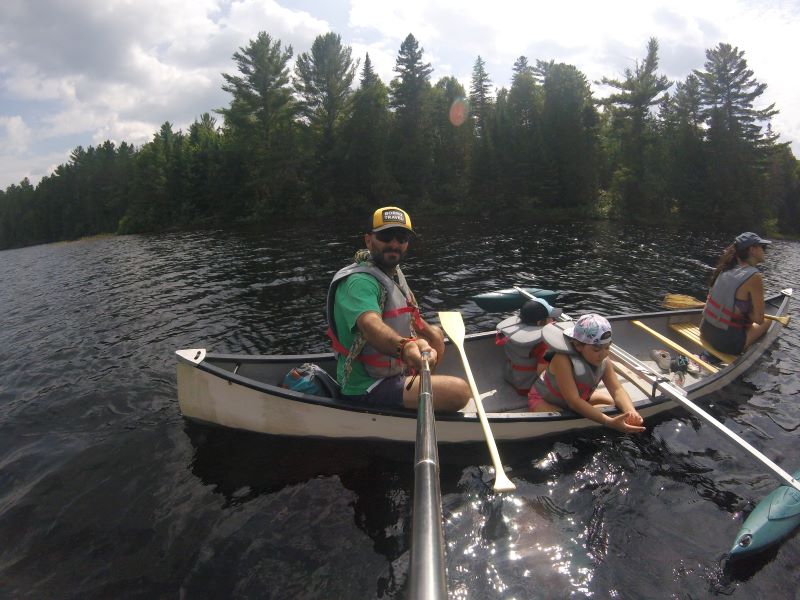
We stayed in St Mathieu du Parc at theAuberge Mandala A delightful B&B run by three young travellers, and it shows in every single detail, in how this colourful little hotel is cared for, organised and decorated, where nothing is left to chance!
Located next to a food truck (also run by them) where I ate perhaps the best burrito of my life, and a café-bistro that feels like a wonderful little museum! Well done, guys! If I had a guest house, I'd run it exactly the way you do!
Before heading home, we stopped on the outskirts of St. Mathieu to visit a small shop that produces the maple syrup so famous here. The friendly owner explained the various production processes and let us taste several different types of syrup. Did you know that 80% of the world's maple syrup comes from Canada?
This morning we set off again for Montreal.
The only truly bilingual city on the continent, Montreal is literally split in half by Boulevard Saint Laurent, separating the French-speaking eastern half from the slightly more English-speaking western half. What makes Montreal so beautiful is its blend of French joie de vivre and cosmopolitan dynamism!
Let yourself be seduced by the refined restaurants of the Plateau or savor the Parisian atmosphere on a terrace in the Latin Quarter, before admiring the picturesque, quintessentially American skyline from the Kondiaronk in the Parc du Mont Royal. Stroll through the winding alleys of the old town, lined with imposing buildings that testify to the city's rich history and ancient splendor.
Vieux Montréal. A maze of winding, cobblestoned streets lined with Victorian stone houses that now house cozy restaurants, art galleries, and boutiques.
We will spend four days in this lively city, staying in the bohemian neighborhood of Mile End in a wonderful apartment M11 Collection, very elegant, super-equipped, refined, modern and spacious; we couldn't have chosen a better place to end this incredible journey!
Basilique Notre Dame. Considered one of the city's main icons, this majestic church is a triumph of woodwork, paintings, and gilded sculptures. It's a true landmark in the city, and—a little insider tip—Céline Dion got married here in 1994.
We stroll along the lively Rue Saint Paul, past souvenir shops and charming restaurants. Not far away is Chinatown, announced by two large gates; here you'll find numerous Taiwanese tea shops, Hong Kong-style bakeries, and Chinese restaurants and supermarkets. Everyone around you will be speaking Chinese, and the air will smell of steamed dumplings and soy sauce everywhere!
Little Italy. In the lively Little Italy or Petite Italie neighborhood, some of the most classic Italian myths come to life, expressed in the intense aroma of coffee, thick tomato sauce, and loud music from Ricchi e Poveri or Albano e Romina in the gigantic "Milano" supermarket, where you won't even know you're not in Italy.
Italian league football matches are broadcast in every venue on Boulevard Saint Laurent, and it's wonderful to stop and chat with these old men from all over the peninsula who, after the war, made the courageous decision to try their luck in the new world! Here they are, nostalgically recalling Catanzaro, Campobasso, Chieti, and Cerignola, chatting with us over espressos now that, as retirees, they recall the various challenges they faced in this nation "where life is good."
And while you're there, stop by Marchè Jean Talon, the local market... even if we found the prices a bit high!
In Montreal, you can taste Canada's most famous bagels: Farmount and St. Viateur, which have been delighting the palates of Polish customers since 1950 and for generations.
On the multicultural theme, a few blocks further is Schwartz, made famous by the Netflix episode "Feed Phil" for its exquisite smoked meat sandwiches. Or a pastel de nata in the Portuguese neighborhood, excellent Caribbean-style chicken or pork in the Haitian section at Sissi and Paul, or the poutine joint, with fries with cheese curds and various sauces... basically, there's something for everyone!
We also take the opportunity to meet again a Moroccan family we met in Cuba last year and who lives in a charming little village across from Montreal: Boucherville. We spent a wonderful evening at Sofia and Mohamed's house with their wonderful family, increasingly convinced that the greatest beauty of travel is often found in meeting new people!
Thanks Canada
Merci Canada
Error: No feed found.
Please go to the Instagram Feed settings page to create a feed.